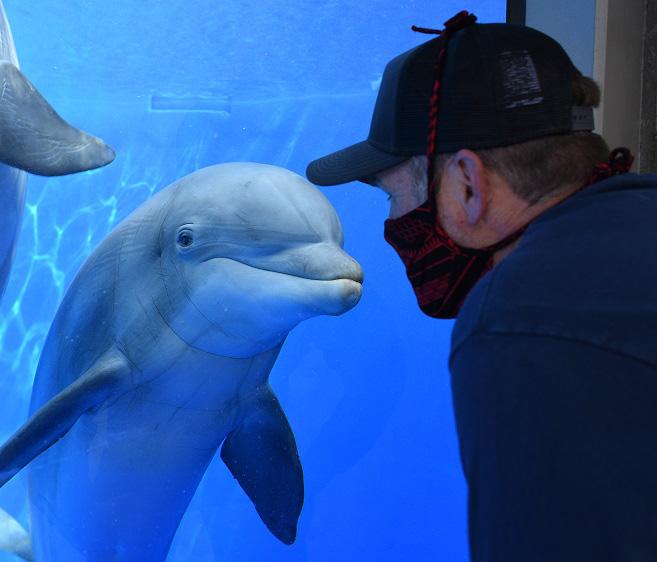Humans are poorly adapted for oxygen deprivation, making us vulnerable to long-term effects from a disease that disrupts the body’s oxygen supply pathway

Credit: T.M. Williams
When Terrie Williams began hearing about the wide range of symptoms experienced by patients with COVID-19, she saw a connection between the various ways the disease is affecting people and the many physiological adaptations that have enabled marine mammals to tolerate low oxygen levels during dives.
Williams, a professor of ecology and evolutionary biology at UC Santa Cruz, has spent decades studying the physiology of marine mammals and their extraordinary ability to perform strenuous activities while holding their breath for long periods under water.
“Diving marine mammals experience a lifetime of rapid physiological transitions between normal oxygenation and hypoxia [low oxygen levels],” Williams said. “They’ve got ways to protect themselves and allow their organs to keep functioning while holding their breath for hours at a time, but there’s a whole suite of biological adaptations that had to happen for them to be able to do that.”
Lacking those adaptations, humans are vulnerable to rapid damage in a wide range of tissues when oxygen levels drop due to the effects on the lungs and cardiovascular system of infection with the coronavirus SARS-CoV-2. In a review article published December 3 in Comparative Biochemistry and Physiology, Williams explores how the diving physiology of marine mammals can help us understand the effects of COVID-19.
“It really highlights why it is so important for people to protect themselves from infection with this virus,” she said. “Damage to oxygen-deprived tissues happens fast and can be irreversible, which may account for the long-term effects we are beginning to see in people after coronavirus infections.”
The heart and brain are especially sensitive to oxygen deprivation, and marine mammals have multiple mechanisms to protect these and other critical organs. In the first place, marine mammals have much higher oxygen carrying capacity than humans due to their greater blood volume and hemoglobin concentrations. In addition, some marine mammals contract their spleen during dives to release a store of oxygen-rich blood cells into the circulation. To avoid blood clots resulting from such high concentrations of red blood cells, many species lack a key clotting factor found in other mammals.
Other adaptations include greatly increased concentrations of oxygen-carrying proteins such as myoglobin in heart and skeletal muscles and neuroglobin and cytoglobin in the brain. In addition, numerous safety factors and biochemical buffers enable even the most oxygen-dependent tissues in marine mammals to withstand not only low oxygen but also the subsequent reperfusion of tissues with oxygenated blood. In humans, reperfusion after a heart attack or stroke often leads to additional tissue damage.
According to Williams, the solutions that marine mammals have evolved for tolerating hypoxia provide a natural template for understanding the potential for damage to oxygen-deprived tissues in humans.
“Studying marine mammals allowed me to understand what it takes to protect the body when the availability of oxygen is low,” she said. “There are so many ramifications of shutting down the oxygen pathway, and I think that’s what we’re seeing in these COVID patients.”
Williams is particularly concerned about the so-called “long-haulers” who continue to have symptoms long after they were infected with the coronavirus.
“You hear people say it’s just like the flu, but COVID scares the heck out of me because of the potential for long-term damage to the heart and brain,” she said. “When you think about oxygen deprivation and the tissue repair process, it makes sense that many people are having a hard time getting back to normal life, even after a mild infection.”
Williams urges people to do all they can to avoid becoming infected. “Our heart and brain cells are meant to last a lifetime, and we cannot replace them once they are damaged,” she said. “Dolphins and whales have natural protections that humans lack, so we are highly vulnerable to hypoxia.”
###
Randall Davis, a marine biologist at Texas A&M University, coauthored the paper with Williams. This work was funded by the Office of Naval Research.
Media Contact
Tim Stephens
[email protected]
Related Journal Article
http://dx.




